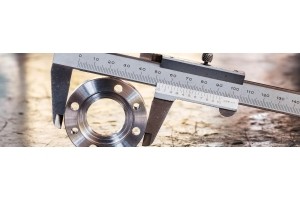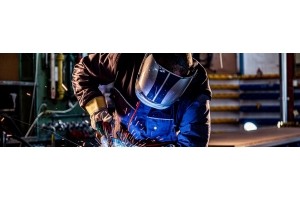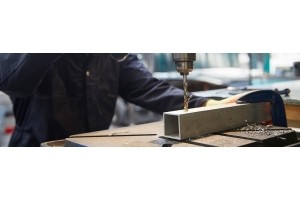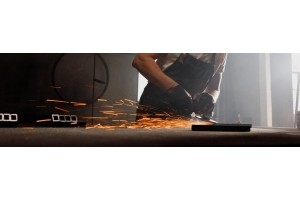- Material
-
- Aluminium 61
- Brass 8
- Stainless Steel 8
- Galvanised Steel 1
- Mild Steel 1
7 Golden Metalworking Safety Practices for a Safer Workspace
Metalworking is a rewarding craft, but safety should always come first. However, it involves risks, no matter whether you’re cutting stainless steel, aluminium, or other materials. By practising metalworking safety, you lower the chances of injury. This leads to better productivity and a safer, more efficient workspace. Our guide covers seven metalworking safety practices.
These are essential practices for DIYers at home and professionals in industries like aerospace and construction.
Safety Practice 1: Use the Right Personal Protective Equipment (PPE)
Personal protective equipment (PPE) is essential for metalworking safety. From sharp edges to flying sparks, PPE acts as the first line of defence against these hazards. Working with metals like stainless steel or aluminium involves risks that PPE can mitigate.
The Health and Safety Executive (HSE) found that using the correct PPE reduces injury risks in high-risk areas, such as metalworking. For example, welding workers should use respiratory protection as this helps prevent serious health issues like lung cancer and asthma. Also, the Personal Protective Equipment at Work Regulations 1992 mandate PPE to keep workers safe.
Essential PPE for Metalworking
- Use googles to protect your eyes from flying particles and sparks.
- Wear cut-resistant gloves to avoid cuts and abrasions when handling metal.
- Respirators are crucial when cutting or welding metals that release harmful fumes or dust.
- Hearing protection is essential when working with loud equipment like grinders or saws.
- Flame-resistant clothing is necessary when welding or handling hot materials.
Safety Practice 2: Proper Handling of Materials
The weight and sharp edges of metal materials can cause serious injuries if not handled properly. Metalworking often involves using large sheets of stainless steel, aluminium, or mild steel. Incorrect handling can lead to musculoskeletal strains or cuts. By following proper handling techniques, you can significantly cut down on these risks. This applies to both small DIY projects and large industrial tasks.
Best Practices for Material Handling
- Always use hoists, cranes, or forklifts when lifting heavy metal sheets or bars. Lifting equipment will help prevent strain and ensure safe posture.
- Before cutting or grinding, secure the metal firmly with clamps or a vice to prevent it from shifting unexpectedly.
- Organising your materials helps you find what you need quickly. It also reduces the risk of trips and accidents.
Safety Practice 3: Maintain a Clean & Organised Workspace
Messy areas raise the risk of tripping, falling, and accidentally knocking over tools or materials. Keeping your workspace clean ensures you can move freely and avoid these common accidents.
In 2025, HSE estimated that 604,000 workers in Great Britain had a non-fatal injury at work. Slips, trips, and falls were some of the most common incidents. Taking simple steps like cleaning spills right away and keeping paths clear can help lower these risks.
Tips for Organising Your Workspace
- Ensure your workbench and floor are free from unnecessary clutter. A tidy space helps you move safely and lowers the risk of tripping on tools or materials.
- Ensure your workspace is bright. This helps you see edges, cutting lines, and small parts clearly. It also lowers the risk of mistakes or accidents.
- Proper ventilation is crucial when welding or grinding. Fumes and dust can pose health risks, so ensure your workspace is well-ventilated.
Safety Practice 4: Know Your Tools and Equipment
Understanding how to use your tools safely is critical in any metalworking task. Should you use a reciprocating saw for stainless steel or a power drill for precise holes? Knowing your tools reduces the risk of accidents. Improper use or failure to maintain tools often leads to serious injuries. Manual handling involves lifting, lowering, pushing, pulling, and carrying loads. It is a common cause of workplace injuries in the UK.
In 2023/24, about 543,000 workers said they had work-related musculoskeletal disorders (MSDs). Many of these issues came from poor manual handling practices. These injuries can cause considerable time away from work. During this period, MSDs are responsible for around 7.8 million lost working days.
Tool Safety Best Practices
- Familiarise yourself with the manufacturer’s instructions before using any tool. This ensures you are aware of safety features and usage guidelines.
- Always check your tools for damage before use. Regularly maintain and lubricate tools to ensure they remain in good working condition.
- Use tools specifically designed for the material you’re working with, such as metal cutting saws for aluminium or stainless steel.
Safety Practice 5: Follow Proper Cutting & Shaping Techniques
Cutting and shaping metal is one of the riskiest tasks in metalworking. The wrong technique can cause serious injuries or result in poor-quality cuts. Whether you’re working with aluminium sheets or stainless steel, using the right tools and methods ensures your work is precise and safe.
Best Practices for Cutting & Shaping Metal
- Always secure the metal firmly with clamps or a vice before cutting to avoid unexpected shifts during work.
- Avoid rushing through cuts. Slow, careful cutting reduces mistakes and injuries, ensuring you achieve better results.
- Use tools specifically designed for the type of metal you’re working with. For example, use band saws for thicker aluminium sheets and hacksaws for thinner metal pieces.
Safety Practice 6: Implement Safe Electrical & Welding Practices
Both electrical work and welding are essential in metalworking, but come with their own set of hazards. Electrical shock, burns, and fires are some of the most serious risks.
HSE reports approximately 1,000 electrical accidents at work annually. Around 25 people lost their lives, often due to mishandling electrical devices or using faulty welding equipment. Following safe operating practices and checking equipment regularly can greatly reduce these risks.
Key Safety Measures for Electrical Work & Welding
- Ensure that all electrical equipment is properly grounded. Frequently inspect cables and plugs for signs of wear. Always unplug before doing maintenance.
- Wear a welding helmet to protect your eyes from sparks and UV radiation. Also, gloves and flame-resistant clothing are essential to shield against burns.
- Before you start, check your welding or electrical equipment for problems. Also, make sure your workspace is free of flammable materials.
Safety Practice 7: Regular Training & Refresher Courses
No matter how experienced you are, metalworking safety procedures evolve. Consistent training is vital for ensuring your skills and knowledge match the latest safety protocols.
Steps to Ensure Ongoing Safety Education
- Arrange safety training once a year or twice a year. This helps everyone stay aware of new safety protocols and practices.
- Promote a culture of peer review and open discussion about safety issues. This helps everyone take responsibility for ensuring a safe workspace.
- Keep updated with the latest HSE regulations and product innovations to stay on top of emerging safety guidelines.
Create a Safer, More Productive Workspace
Metalworking is a rewarding craft, but safety must always come first. By following these metalworking safety practices, you lower the risk of injury. This also makes your workspace safe and efficient. No matter if you’re using stainless steel, aluminium, or mild steel, these practices make your workspace safe and productive.
Explore Clickmetal’s range of cut-to-size metals, ideal for both professional and DIY projects. Our team understand that safety is an ongoing commitment. That is why we constantly invest in new technology and techniques. This ensures we deliver safe, high-quality metals for your projects. Visit our general FAQs for more safety tips and details about our products and services.
Call 01794 526090, get in touch and ensure your next project is done safely and efficiently.












